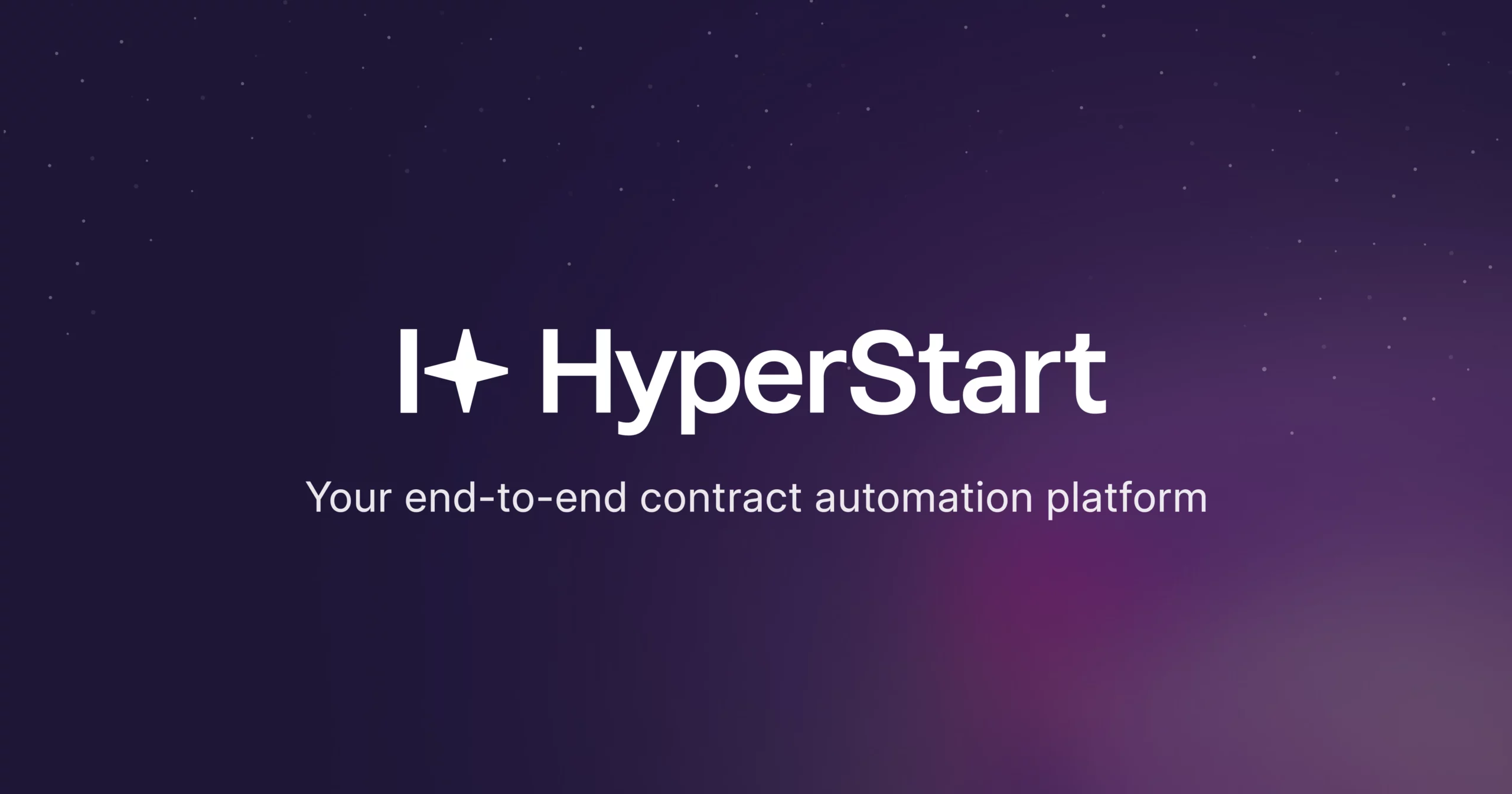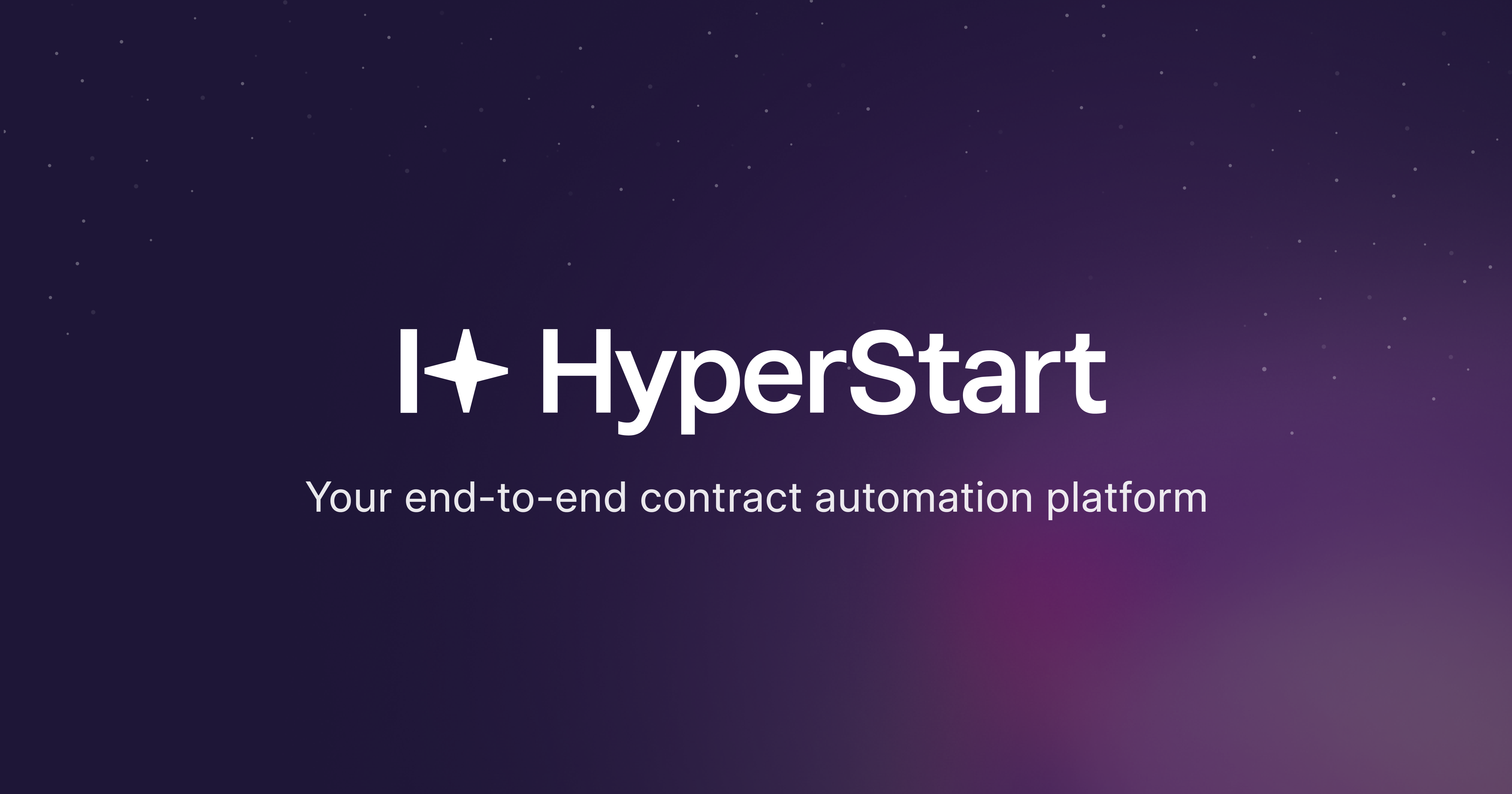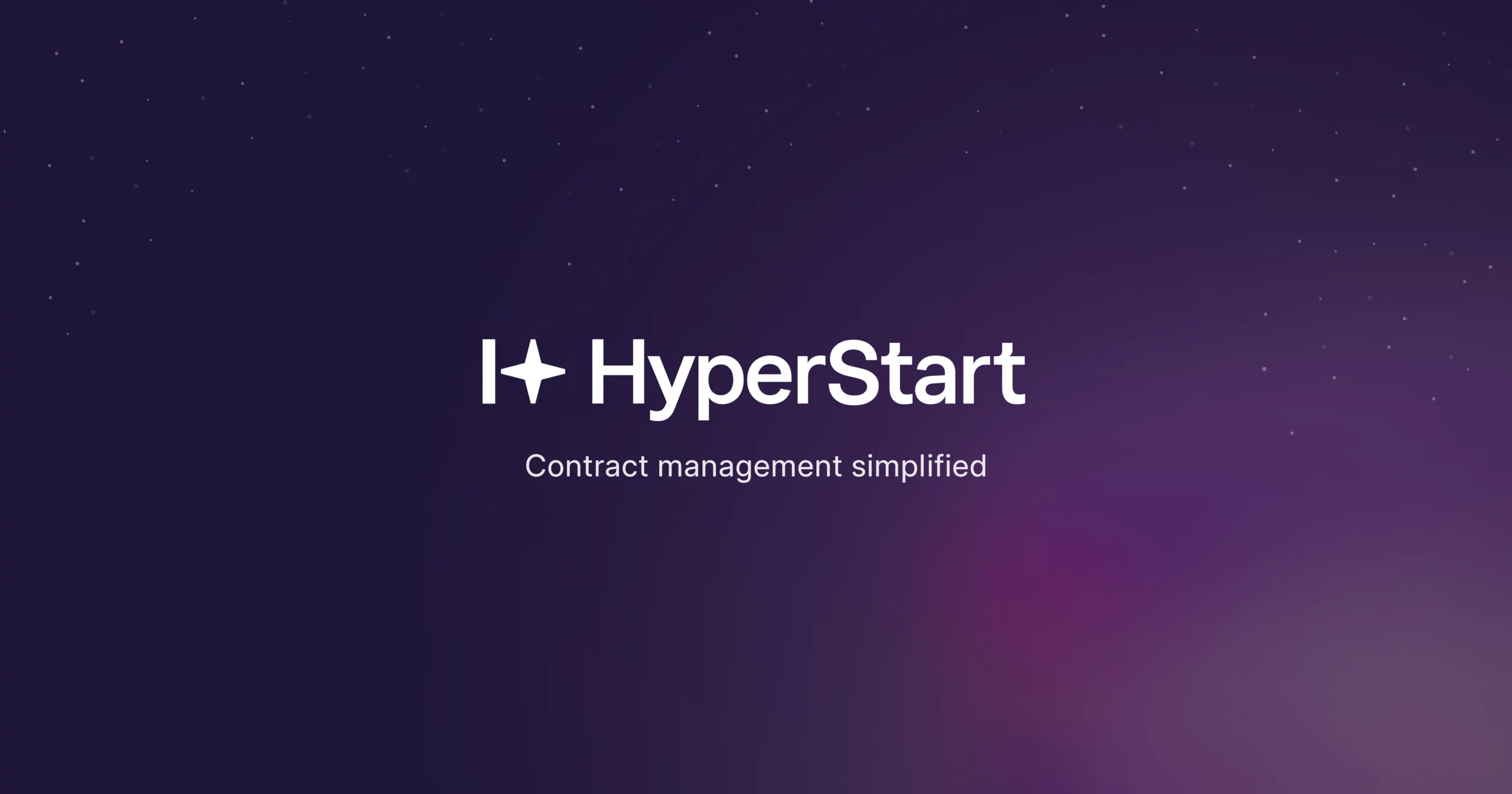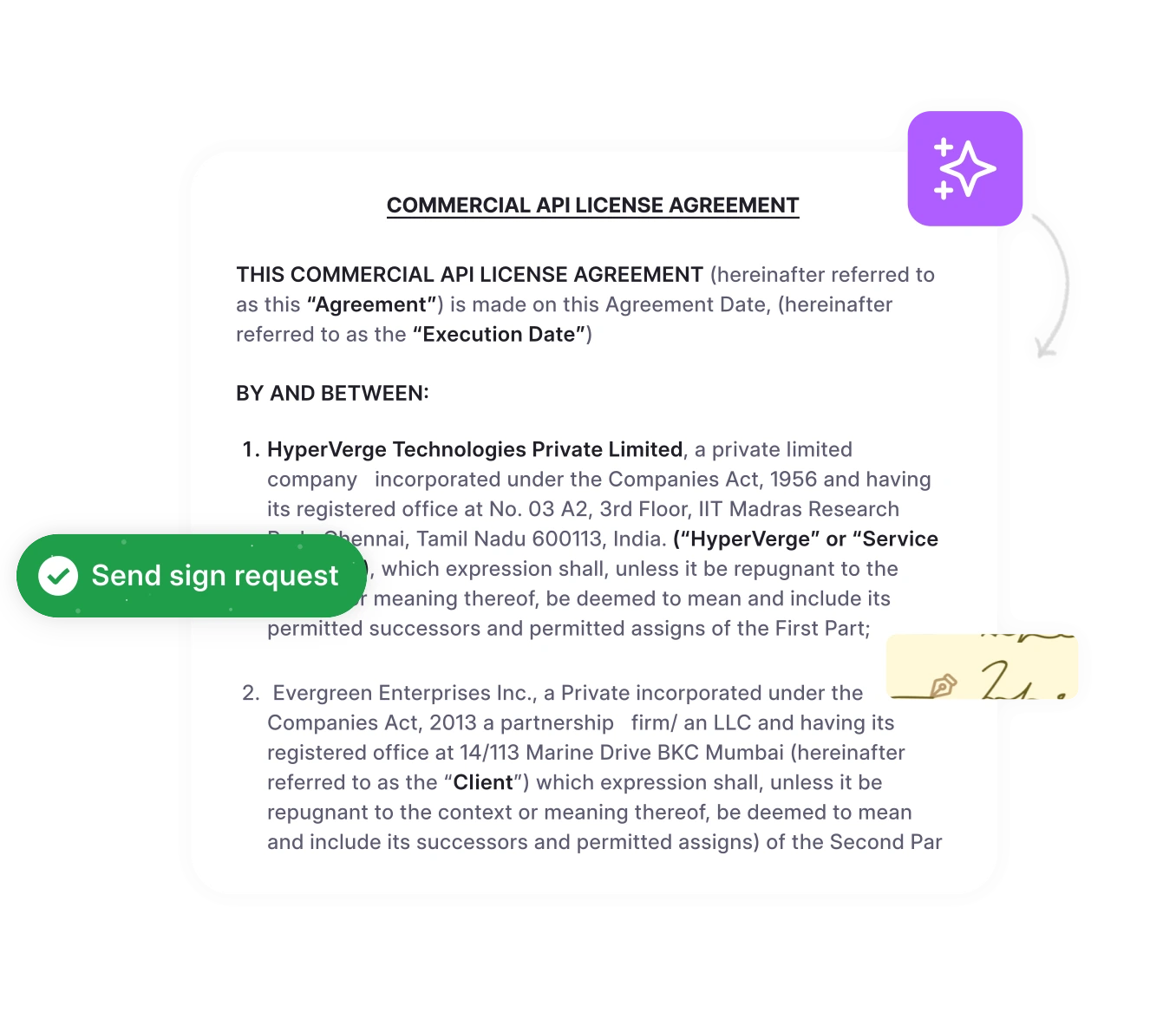Contracts form the “relationship DNA” between organizations. They are the instructions for two parties that determine the parameters of performance and risk for the relationship.
According to Agiloft, 50% of CLM users share contract data across three or more teams, highlighting its growing role in collaboration. Still, adoption of advanced tools remains limited: an
An EY Law survey found that only 27% of organizations use contract data extraction technologies to capture key terms. That’s changing quickly—49% of businesses plan to invest in CLM technology within the next year, prioritizing visibility, integration, compliance, and smarter access to contract metadata.
In this blog, we’ll explore what contract data is, key components, types, challenges, and best practices to manage them more effectively. Let’s begin.
What is contract data?
Contract data encompasses all information contained within, extracted from, or associated with your contracts. It’s the structured and unstructured information that drives business decisions, ensures compliance, and unlocks revenue opportunities.
Breaking down the basics
Structured data includes clearly defined information like renewal dates, payment terms, and contract values. This data fits neatly into databases and spreadsheets, making it easier to analyze and track.
Unstructured data consists of the narrative content—clauses, obligations, and contract terms written in natural language. While harder to process manually, this data contains the richest insights about your business relationships.
Metadata provides context about your contracts: who created them, when they were signed, version history, and approval processes. This “data about data” makes contracts searchable and manageable at scale.
Unlocking a contract’s hidden value
Consider a simple vendor agreement. Beyond the obvious payment terms and renewal dates, your contract data might reveal:
- Automatic pricing clauses
- Volume discounts you ‘re not leveraging
- Liability caps that need review
- Termination rights to exercise
LeadSquared, a B2B SaaS company managing 1,000+ contracts, discovered exactly this challenge. With four legal counsels handling 180-250 contracts monthly, they needed better visibility into contract terms and obligations.
“We had a list of around 22 parameters on which we had evaluated five vendors. And we chose to go with HyperStart”, says Om Prakash Pandey, their Legal Counsel Head.
Crucial contract data elements
Key components of contract data are:
- Financial terms: Payment schedules, pricing structures, penalties, and incentives
- Legal obligations: Performance requirements, deliverables, and compliance standards
- Temporal elements: Start dates, renewal windows, termination periods, and milestone deadlines
- Risk allocations: Indemnification clauses, liability limits, and insurance requirements
- Governance provisions: Contract management reporting requirements, audit rights, and dispute resolution processes
Contract data vs. data contract:
This distinction trips up many professionals. Contract data is the information living within your existing agreements. The terms, dates, and contractual obligations that govern your business relationships.
Implementing data contracts means rolling out a specific contract type that defines how data will be shared, processed, or protected between parties involved.
Why does contract data matter
Meet legal and compliance standards.
When contract data remains buried in filing cabinets or scattered across email threads, organizations miss renewal dates, overlook compliance and regulatory requirements, and fail to enforce favorable terms.
Save on redundant overpayments and unused services
Companies need to be asking crucial questions, such as:
- Are our procurement teams leveraging the best negotiated prices from suppliers?
- Do our revenue teams understand where they are entitled to increase prices based on inflation?
- Do our finance teams have visibility into what deals are tied up in contract negotiation and what levers they have to accelerate?
Forbes’ insight into crucial questions to ask highlights how contract data visibility directly impacts financial performance.
Negotiations and renew with data
Historical contract data identify trends and reveal negotiation patterns, successful term structures, and renewal behaviors. This intelligence informs future negotiations and helps legal teams anticipate counterparty positions.
Struggling to Organize Data?
See how HyperStart’s centralized repository auto-extracts and organizes metadata with contract families, filters, and columns.
Book a Demo3 Data types to track (And how)
1. Structured data: Dates, pricing & obligations
Structured data includes clearly defined fields like “Renewal Due by Q4 2024” or “Monthly Payment: $10,000.” This information should be extracted and stored in databases where it can drive automated workflows and reporting.
2. Unstructured data: Emails & PDF
Most contract value lives in unstructured formats—email chains, PDF attachments, and Word documents. Only 20% of legal teams have embraced AI for tasks like contracts, e-discovery, or privacy, despite AI’s ability to extract insights from this unstructured goldmine.
3. Metadata: For searchable contract
Metadata makes contracts findable. Who negotiated this deal? When was it last amended? Which template was used? Digitizing contextual contract information transforms repositories from digital filing cabinets into strategic business tools.Also read The Ultimate Guide to Contract Storage
The benefits of contract data management
Contract data is scattered across 24 different systems in medium to large businesses, according to WorldCC research. Spreadsheets become outdated the moment they’re created, shared folders lack search capabilities, and email chains fragment institutional knowledge.
Centralized data with unique contract IDs
The solution lies in centralized contract repositories with AI-powered search and automated metadata extraction. Every contract needs a unique identifier that connects related documents, amendments, and correspondence.
Also read: Contract Migration: Beyond Data to Intelligence
Qapita, a digital equity management platform serving 2,400+ clients, experienced this significant challenge firsthand. Here’s what they say now.
Implementation was very smooth. All the contracts were on the system in a few minutes using the bulk upload feature. I was able to see the AI extracted metadata also on the tool immediately. That is really impressive.

Mayuri Jaltare
Company Secretary at Qapita
Spot renewal dates automatically
Manual renewal tracking fails at scale. AI-powered contract management systems automatically extract renewal dates and send calendar alerts to stakeholders involved, ensuring no revenue opportunity slips through the cracks.
Use historical data to renew or upsell
Contract data reveals which clients renewed with expanded terms, upgraded service levels, or added new products. This intelligence helps sales teams identify upselling opportunities and predict customer behavior.
Avoid fines from non-compliance
Regulatory landscapes evolve constantly. Contract data systems should flag agreements subject to GDPR, SOX, or industry-specific regulations. They ensure compliance so teams can proactively address regulatory requirements.
Prevent scope creep
“We usually track clauses like liability, indemnity, and the term in executed contracts. HyperStart has made it very easy with their AI extraction of metadata”, notes Mayuri Jaltare from Qapita. Clear obligation tracking prevents scope creep and ensures all parties understand their responsibilities.
Stay on top of contractual obligations.
Missing contract deadlines can trigger automatic renewals at unfavorable terms, penalty clauses, or even contract termination. 57% of businesses don’t retain a list of all the third parties they share sensitive information with, creating additional compliance and security risks.
Parting thoughts
Get actionable insight in minutes
Modern AI can extract complex contract terms, identify non-standard clauses, and flag potential risks in seconds. “Using HyperStart’s AI review, we get a first cut review in less than 1 minute, reducing the contract review time from 4-6 hours to just 2 hours”, reports LeadSquared’s Legal Counsel Head.
Assess and anticipate risk
AI doesn’t just extract data—it analyzes patterns, predicts outcomes, and recommends actions. Contract intelligence dashboards can help forecast renewal likelihood, identify negotiation bottlenecks, and suggest optimal term structures based on historical performance.
Contract data is about unlocking the strategic value hidden in your business relationships across the org. Mastering metadata management helps discover opportunities, optimize performance, and build competitive advantages that compound over time.












